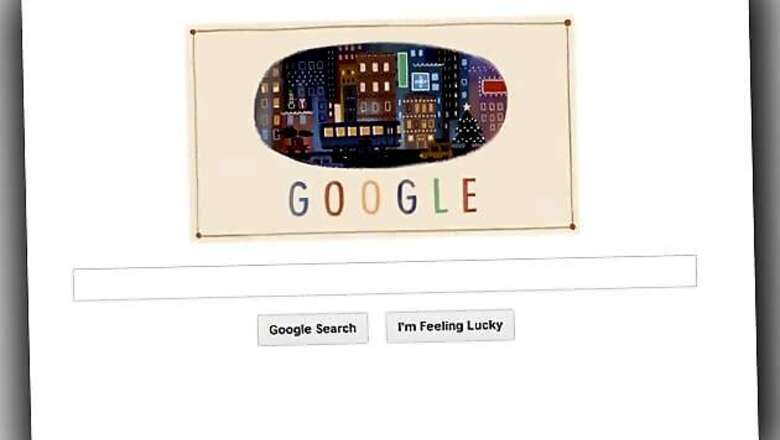
views
New Delhi: It's Christmas, and Google has posted a second doodle in its "Happy Holidy" series. The new Happy Holidays doodle features a brightly-lit street with an Xmas tree across the street and the letters of Google written underneath. Second in the series, the doodle has design elements similar to the doodle posted on Christmas Day Eve.
The doodle posted on December 24 featured a one-horse open sleigh dashing through the snow. Google has been wishing its users with a pre-Christmas doodle for over 10 years now. In 2012 Happy Holidays doodle on the Google homepage had a parade of toys, some of whom were playing different musical instruments. The grand master leading the parade was welcoming the festive season, and the letters of the word Google were seen in the backdrop.
In 2011, Google happy holidays doodle was made up of lit up holiday symbols - snowflake, Santa Claus, bell, snowman, candle and a gift box - on a dark background, symbolising the night sky. The Google logo appeared as a faint outline behind the holiday icons.
In 2010, Google had put up a doodle of interactive portraits of holiday scenes from around the world. Before 2010, Google used multiple doodles for the holiday season.
Christmas more cultural than religious for many
For a significant number of Americans, Christmas has largely lost its religious meaning, becoming an occasion focused instead on visiting family and friends and exchanging gifts, according to a new survey released Wednesday.
Only half of people who responded to a Pew Research Center poll said they considered Christmas a religious holiday, even though nearly three-quarters said they believed Jesus was born to a virgin. One-third said they viewed Christmas as a cultural celebration.
Church attendance will be higher than usual during the holiday. But of the 69 per cent of respondents who said they attended Christmas worship services as a child, only 54 per cent will do so this year. By contrast, 86 percent say they will gather with extended family or friends and will buy gifts for them.
The survey is the latest to measure the gulf between many Americans and religious life. About 20 per cent of Americans overall say they have no religious affiliation, a figure which is expected to rise among younger generations.
The Pew Christmas study found a similar trend. While two-thirds of people age 65 and older consider Christmas religious, only 40 percent of adults under age 30 agree. Eight-in-10 non-Christians will celebrate the holiday, but mostly as a cultural celebration. A separate Pew poll found about one-third of U.S. Jews had a Christmas tree at home last year.
Not surprisingly, Christians who more closely identify with a faith are more likely to view Christmas as religious.
More than 80 per cent of white evangelicals consider the holiday religious, compared to 66 percent of white Catholics and 60 per cent of black Protestants. Fifty-six percent of white Protestants from what are known as mainline churches consider the celebration more religious than cultural. About half of Hispanic Catholics consider Christmas more religious than cultural, but in several Latin American countries the holiday is customarily celebrated on Epiphany, which falls on January 6.
The survey of about 2,000 people was conducted from December 3 through December 8 and has a margin of error of plus or minus 2.6 per cent.
(With inputs from AP)



















Comments
0 comment